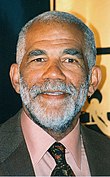Wikipedia:Today's Featured Article

Each day, a summary (roughly 975 characters long) of one of Wikipedia's featured articles (FAs) appears at the top of the Main Page as Today's Featured Article (TFA). The Main Page is viewed about 4.7 million times daily.
TFAs are scheduled by the TFA coordinators: Wehwalt, Dank and Gog the Mild. WP:TFAA displays the current month, with easy navigation to other months. If you notice an error in an upcoming TFA summary, please feel free to fix it yourself; if the mistake is in today's or tomorrow's summary, please leave a message at WP:ERRORS so an administrator can fix it. Articles can be nominated for TFA at the TFA requests page, and articles with a date connection within the next year can be suggested at the TFA pending page. Feel free to bring questions and comments to the TFA talk page, and you can ping all the TFA coordinators by adding "{{@TFA}}" in a signed comment on any talk page.
Featured article candidates (FAC)
Today's featured article (TFA):
- This month's queue
- About Today's featured article
- Recent TFAs and statistics
- Current TFA requests
- Potential TFA requests
- TFA oddities
- Most viewed TFAs
- Featured articles yet to appear as TFA
- Script to track TFA recent changes
Featured article tools:
From today's featured article
The Statue of Liberty (Liberty Enlightening the World) is a colossal neoclassical sculpture on Liberty Island in New York Harbor, within New York City. The copper statue, an 1886 gift to the United States from the people of France, was designed by French sculptor Frédéric Auguste Bartholdi, and its metal framework was built by Gustave Eiffel. It is a figure of Libertas, the Roman goddess of liberty, holding a torch and a tablet bearing the date of the United States Declaration of Independence. A broken chain and shackle lie at her feet as she walks forward, commemorating the national abolition of slavery following the American Civil War. After its dedication the statue became an icon of freedom and of the United States, and it was later seen as a symbol of welcome to immigrants arriving by sea. Its completion was marked by New York's first ticker-tape parade and a dedication ceremony presided over by President Grover Cleveland. (Full article...)
From tomorrow's featured article
Ed Bradley (1941–2006) was an American broadcast journalist best known for reporting with 60 Minutes and CBS News. Bradley started his television news career in 1971 as a stringer for CBS at the Paris Peace Accords. He won Alfred I. duPont and George Polk awards for his coverage of the Vietnam War and the Cambodian Civil War. Returning to the United States, he became CBS's first Black White House correspondent. Bradley joined 60 Minutes in 1981 and reported on more than 500 stories with the program during his career, the most of any of his colleagues. Known for his fashion sense and disarming demeanor, Bradley won numerous journalism awards for his reporting, which has been credited with prompting federal investigations into psychiatric hospitals, lowering the cost of drugs used to treat HIV/AIDS, and ensuring that the accused in the Duke lacrosse case received a fair trial. He died of lymphocytic leukemia in 2006. (Full article...)
From the day after tomorrow's featured article
"Wildest Dreams" is a song by the American singer-songwriter Taylor Swift (pictured); it is the fifth single from her fifth studio album, 1989 (2014). Described by critics as synth-pop, dream pop, and electropop, the song was written by Swift and its producers Max Martin and Shellback. The lyrics feature Swift pleading with a lover to remember her even after their relationship ends. Retrospectively, critics have described "Wildest Dreams" as one of Swift's most memorable songs. The single peaked within the top five on charts in Australia, Canada, Poland, South Africa, and also the United States, where it became 1989's fifth consecutive top-ten single on the Billboard Hot 100. The track was certified four-times platinum. The music video depicts Swift as a classical Hollywood actress who falls in love with her co-star; media publications praised the production as cinematic but accused the video of glorifying colonialism. (This article is part of a featured topic: 1989 (album).)


